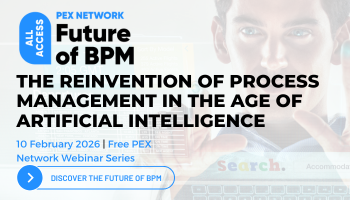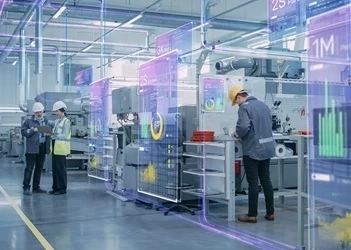Only one third of business leaders report healthy change adoption
Change management is a critical element of successful business transformation
Add bookmark
Only one in three (32 percent) mid-to-senior level business leaders say the last change they led achieved healthy change adoption by employees, according to a new survey by Gartner, Inc.
Organizations experiencing ungovernable change are 1.6-times less likely to experience high change trust, while 79 percent of employees have low trust in change, Gartner stated.
Change management is a critical element of successful business transformation, particularly given the fast-paced, constantly evolving environment in which modern organizations operate. This is compounded by the growth of emerging artificial intelligence (AI) driven by new advancements in generative AI and agentic AI.
As businesses increasingly integrate AI into corporate workflows, change management strategies must evolve to harness the transformative potential of these technologies.
Join the PEX Network community

Don't miss any news, updates or insider tips from PEX Network by getting them delivered to your inbox. Sign up to our newsletter and join our community of experts.
Learn MoreWhat is healthy change adoption?
Gartner defines healthy change adoption as the success elements that leaders can directly influence – getting employees to act on change, do so on time and in a healthy way that doesn’t adversely impact employee performance and engagement and cause undue stress.
“Organizations with better than average healthy change adoption report two times higher year-over-year revenue growth rate,” said Ingrid Laman, VP, advisory in the Gartner HR practice. “For companies with more than 50,000 employees, this can equal up to US$2.2 billion annually.”
Change is continuous in modern businesses
Changes today are continuous, stacked on top of one another, highly interdependent and often driven by factors external to the organization, said Kayla Velnoskey, director in the Gartner HR practice. “While leaders are used to operating in a VUCA (Volatility, Uncertainty, Complexity, Ambiguity) environment, the nature of change today has made it ungovernable.”
Typically, leaders use inspiration and the vision of change to get employees to adopt change. However, Gartner analysis found the inspirational approach only works when there is high change trust. When change trust is low, Gartner’s model predicts that only one-quarter of changes led by inspirational leaders would achieve healthy change adoption.
The best change leadership approach is when leaders routinize change, so it becomes instinctive for employees to adopt change as part of the normal course of doing work, according to Gartner.
“To business leaders, this sounds like more work than they have capacity to tackle,” said Laman. “HR can help by showing business leaders that acknowledging the change journey is not more work; instead, it requires them to apply the skills they already have in new ways, redistributing and balancing their time and effort to make change leadership sustainable.”
Register for All Access: Change Management for Business Transformation 2025!
8 things to know about change management in the AI era
Here are eight things business leaders must know about change management in the AI era.
- People come first: Even with AI, innovation still starts with people. While generative AI can handle predictable tasks, true creativity and change management require a human touch.
- Trust is key: Change management is less about tech and more about trust. However, you cannot outsource trust – you must earn it.
- Leadership sets the tone: In the AI era, change management is supported by leadership. Leaders need to address fears, build capabilities and create the necessary psychological safety to innovate and drive growth.
- Change is continuous: The pace and complexity of AI-driven change means transformation can no longer be treated as a one-off event. It is a constant.
- Training and upskilling are essential: Training and reskilling are not optional – they are essential. Helping people build confidence with AI through upskilling and hands-on learning can turn resistance into real engagement.
- Experimentation breeds innovation: Leaders need to ensure their teams see AI as a tool that can simplify their tasks and make them more efficient. Technology changes can feel daunting but when handled well, they can open up exciting opportunities for growth and innovation.
- Holistic views are paramount: Leading change management in the AI era demands that organizations take a holistic view of how they’re advancing their implementations. Otherwise, they might come in on time and on budget but not meet intended goals
- Agility fosters resiliency: Change management today is not about controlling the process but about enabling agility. That means simplifying decision-making, investing in relevant skills and fostering collaboration across teams.
All Access: Future of BPM 2026

You asked, and we listened. Business process management (BPM) remains the cornerstone technology for driving organizational transformation, according to the survey results featured in the latest PEX Report. As we look toward 2026 and beyond, generative AI, agentic AI, and intelligent process orchestration are redefining how processes are designed, executed, and optimized. BPM is your key to adapting swiftly and effectively in this new era.
PEX Network is bringing together industry leaders, technology innovators, and thought leaders to answer your biggest questions and explore the advancements reshaping business today. And you're invited. Register for free to save your spot now!
Register Now












